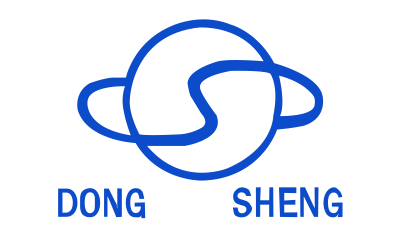Sucker rod pumping is the most common artificial lift method both domestically and internationally:
Venezuela: 70% of oil wells are pumped using rod pumps.
The United States: 85% of oil wells are pumped using rod pumps.
Russia: Over 55% of oil wells are pumped using rod pumps.
China: Over 80% of oil wells use sucker rod pumps, accounting for 75% of total oil production. Rod pumps play a crucial role in my country's oil extraction.
Rod-type deep well pumping units are the main surface equipment for oil production. They convert electrical energy into mechanical energy and include two types: beam pumping units and beamless pumping units. I. Components of Rod-Type Pumping Units:
Beam Pumping Unit:
Working Principle: The belt reducer converts the high-speed rotation of the electric motor into the low-speed rotation of the crankshaft, which is then converted into the reciprocating motion of the suspension rod by a four-bar linkage, driving the downhole sucker rod string and the sucker rod pump to achieve the pumping purpose.
Structural Components: Walking beam-connecting rod-crank mechanism, reducer, power equipment, and auxiliary devices.
Crossbeam: This is the intermediate component connecting the connecting rod and the walking beam, driving the walking beam in a swinging motion.
Walking Beam: The walking beam is mounted on a support, connected to the head at the front end and to the crossbeam at the rear end via a tail bearing.
Balance weight: Helps the motor do work and reduces the load difference between the upper and lower strokes of the motor.
Donkey head: Converts the reciprocating circular motion of the front end of the walking beam into the vertical reciprocating motion of the sucker rod string, while ensuring that the sucker rod is always aligned with the wellhead center during pumping, bearing various downhole loads.
Classification of Walking Beam Pumping Units:
According to structural type, they can generally be divided into conventional type, non-contrast type, front-mounted type, and inclined well type. According to the balancing method, they can be divided into mechanically balanced type, gas-balanced type, and hydraulically balanced type. According to the donkey head structure type, they can be divided into top-turning type, side-turning type, rotary type, suspended type, and double donkey head type.
According to the reducer type, they can be divided into gear type, chain type, and belt type. According to the drive method, they can be divided into electric motor-driven and internal combustion engine-driven.
Beamless Pumping Units:
The biggest feature of walking beam pumping units is their high reliability, but their stroke length is limited for two reasons:
1) The stroke of a walking beam pumping unit is increased by increasing the crank rotation radius. Increasing the stroke of a pumping unit requires increasing its geometric dimensions and weight, leading to higher production costs and lower economic efficiency.
2) The four-bar linkage of a beam pumping unit determines the non-uniformity of the suspension point's motion. Increasing the stroke further worsens the system's stability, thus limiting the stroke length of the beam pumping unit.
Beamless pumping units, not limited by the four-bar linkage, have the advantage of a long stroke. In recent years, my country has successively developed and used front-mounted pumping units, chain pumping units, hydraulic pumping units, and gas-balanced pumping units, with chain pumping units currently being the most representative.
Sucker Rod Pump: General Requirements
1) Simple structure, high strength, good quality, and reliable sealing of connections.
2) Good wear resistance and corrosion resistance of manufacturing materials, resulting in a long service life.
3) Specifications and types can meet the needs of oil well drainage volume, with strong adaptability.
4) The structure should consider sand and gas prevention and include necessary auxiliary equipment.
5) Easy to operate. Main components: Pump barrel, plunger, and traveling valve (discharge valve).
And a stationary valve (suction valve).
Classification: According to the way the sucker rod pump is fixed in the tubing.
It can be divided into tubular pumps and rod pumps.
Pump displacement: The working process of a sucker rod pump consists of three basic stages: the plunger displaces volume within the pump, allowing liquid to enter the pump, and discharging liquid from the well.
Ideally, the volume of liquid entering and discharging in one stroke of the piston is equal to the volume displaced by the plunger:
V=fpS. The displacement per minute is: Vm=fpSN.
Auxiliary Tools:
Sucker rod centralizer: Used in deviated wells and cluster wells to center the sucker rod in the tubing, preventing direct contact with the tubing and reducing wear, vibration, and bending of the sucker rod.
Also included are vibration dampers to reduce sucker rod vibration and anti-loosening devices to prevent the sucker rod coupling from loosening.
Dongsheng can provide sucker rod pumps and related tools, and we have over 20 years of manufacturing experience. Many well-known companies are our partners, such as CNPC, Sinopec, and SLB.

